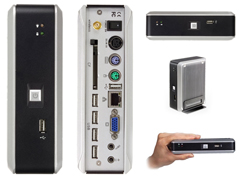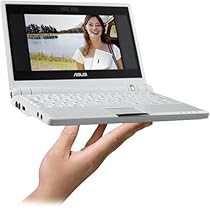The Australian Government is holding the Australia 2020 Summit at Parliament House on 17 April 2008. One thousand Australians have been invited to help with a long term strategy for the Australia's future.
How can ICT be used to help with an economically and environmentally sustainable future, in the face of falling stock markets and rising sea levels?
On 3 February the Australian Government announced it will hold an Australia 2020 Summit at Parliament House in Canberra, 19 to 20 April 2008. One thousand Australians will be invited to help with a long term strategy for the Australia's future in ten areas:
Summit Topics
- Productivity Agenda
- Australian Economy
- Sustainability and Climate Change
- Rural Australia
- Health
- Communities and Families
- Indigenous Australia
- Creative Australia
- Australian Governance
- Australia's Future in the World
The item of most relevance to Green ICT is Sustainability and Climate Change, but Productivity, Australian Economy is also of interest.
Some questions from the background paper:
- What are our long-term sustainability priorities, and how do they fit with our economic ambitions?
- What kinds of national responses are needed to manage the impacts of climate change, and what is the role of local action?
- What is required to increase cleaner energy production, increase energy efficiency and better manage demand? What role can Australia best play in world reduction of greenhouse emissions?
- That public conversation is needed about more sustainable consumption?
- How can we encourage households to be more involved in reducing emissions and waste?
- Water reform will require better incentives to use water well and create new water supplies. What needs to be done to make it work?
- In cities, how do we better manage total water resources including storm water and sewage?
- How can urban form, high quality design, transport policies and building codes make our cities more sustainable?
The Initial Report from the 2020 Summit to the Prime Minister, mentions "Internet" once. Broadband features in several sections on education, culture, consultation with government and regional development. There is no mention of ICT in relation to energy use or sustainability.
The web site for the summit promises a more detailed record during next month. Appropriate use of ICT could have allowed this to be done during the summit. It is unfortunate that the government did not plan for this, so it could be done in a timely and efficient way.
The Initial Report from the 2020 Summit has several areas in which ICT could help with the Top Ideas on Sustainability. One aspect is in ICT systems to help measure environmental accounts, conditions and provide efficient markets. Another is in education. Another is in more efficient ICT systems with a reduced carbon footprint.
The Australian Government has taken power consumption into account somewhat in the Request for Proposals to Roll-out and Operate a National Broadband Network for Australia. The Department of Broadband, Communications and the Digital Economy has asked for details of power consumption and provisions to maximize power efficiency, including the provision of “sleep mode” for both network and customer terminal equipment. However, there are no energy efficiency requirements set and nor requirement the network be carbon neutral, use renewable energy sources or offset carbon emissions.
Thin Client Linux Computer for Consumers
Zonbu , are offering a thin client Linux computer for $US249.00. They include a data storage service and the application software in the price. If you pay for more online storage on a long term plan the cost of the hardware is lower.
The hardware is a small PC (apparently made by MSTI and sold as the "eBox mini Green PC"):
- 1.2 GHz Via Eden CPU (C7 Esther core)
- VIA CX700M chipset
- 512 MB RAM
- Ethernet 10/100 Mbit/s
- PS/2 keyboard and mouse ports, VGA display port and 6 USB 2.0 ports
- 4 GB CompactFlash local storage
- Graphics up to 2048 x 1536 with 16 million colors – hardware graphics and MPEG2 acceleration
From: Zonbu, Wikipedia, 2007
In effect, the computer is sold in a similar way to a mobile phone plan: the more you pay for the monthly service and the longer you commit to the cheaper the hardware is. The service comes with OpenOffice.com and other typical Linux desktop software. A broadband Internet connection for the unit to be usable. This might be a good option for some home users and micro businesses. The business could simply plug the computer in and use it: if it breaks, then get another one, with the data stored on the remote on the server.
Larger businesses and government agencies could use the same hardware, but supplying their own servers for data and backup. Companies which use electronic document management systems could use those systems to store corporate documents created by the client computers.
Zonbu claim carbon neutral computer:
With Zonbu, green doesn't have to make you blue! With its efficient ultra low power design, Zonbu delivers the power of a traditional desktop computer but uses just a fraction of the energy. That could mean as much as $10 a month in energy savings for you — and might just help save the planet, too. Not only does Zonbu's low power design reduce CO2 emissions, but by buying carbon offsets, we make the operation of your Zonbu device completely carbon neutral. Talk about guilt-free computing!
From: Good things come in small boxes, Zonbu, 2007
Via claim Carbon Free Computing:
VIA Carbon Free Computing addresses this issue head on, aimed at offering the world's first line of PC products certified Carbon Free. VIA works with environmental experts to calculate the electricity used by an average Carbon Free Computing product over its lifetime (assumed to be 3 years). Then from the amount of electricity used, VIA calculates how much carbon dioxide emissions will be released into the environment mainly as a result of fossil fuel burning power plants, and then works with regional offset organizations to "offset" that amount of carbon dioxide through projects such as: * Reforestation ... Alternative Energy ... Energy conservation ...
From: VIA Carbon Free Computing - Breathe Easier!,VIA, 2007
Thin client computers can offer benefits beyond environmental ones. As an example thin clients can replace desktop PCs for those workers only needing standard office applications. The thin client can also replace a digital telephone. Corporate applications, such as payroll and finance can be provided to the desktop using the web browser and interactive web applications, such as AJAX. Corporate documents can be retained in central file servers and Electronic Document Management Systems. This removes the need to maintain as much software on the desktop and increases the security of corporate data.
Servers can be consolidated into efficient and easier to manage data centers. These can take advantage of low power disks, processors and green power.
The ICT Environmental Sustainability Group ("Green ICT") brings together professionals interested in balancing economic and environmental aspects of information technology and telecommunications. It is a special interest group of the Australian Computer Society. The group aims to hold joint meetings with other professional bodies interested in technology, the environment and sustainability.




